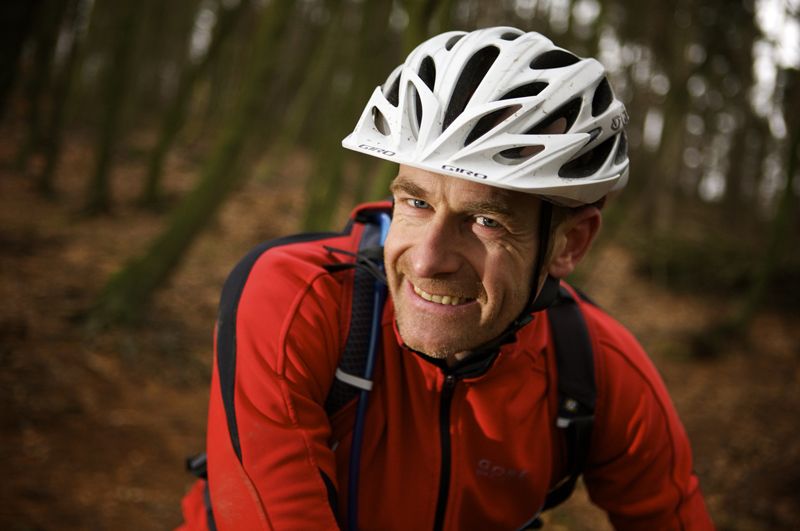GT’s aluminium Zaskar has morphed into a very different beast over the 20 years since it first appeared, but it remains a surefooted and robustly versatile XC machine.
Ride & handling: Good traction and great on the climbs
The steep head angle, long back end and an inline seatpost – which effectively steepens the seat angle – combine to push your weight forward relative to the bike’s natural centre of gravity. The immediate benefit is plenty of emphasis on the front wheel for far better than expected traction.
There’s a danger of low speed lurch from the mid-length stem and steep head, but it snaps round tight singletrack corners quickly and with conviction. The forward weighting also stops the front end lifting on climbs.
Add a seat bolted into the classic ‘up your bum’ max-traction position plus the long chainstays that prevent looping out and it crawls up slippery, technical winter climbs in seemingly complete ignorance of its summer rubber. There’s plenty of frame stiffness to reward a firm press on the pedals, and the fork lockout is handy if a fight kicks off on smooth surfaces.
The same attributes that push you forward for more effective climbing have an inevitable effect on its natural descending confidence. While the big wheels and long wheelbase mean it’s an inherently stable bike overall, that’s not how it feels at first.
Those angles and the flexy QR connection across the fork tips mean front end twitch and shopping trolley shimmy on loose, rocky surfaces, and a less than convincing clarity any time you’re working against the grain of the trail. It’s a trait you get used to and confidence does return after a few ‘feels sketchy but I didn’t crash’ descents, but more radical riders will probably want a more reassuring default feel.
The simple internals of the fork batter against the foam grips and firm frame feel when facing bigger hits too, so you know all about heaps of baby heads, steps or random block impacts.
That forward weight placement makes getting the front wheel off the ground to avoid such impacts a lot harder too, and the Zaskar is definitely a wheels-on-the-ground rather than hop-and-pop player at heart.
Whatever jolts the front end usually kicks pretty hard through the rear too, and we had to do a lot of hovering over the saddle to stop being hammered into early surrender on rougher trails.
GT’s Zaskar delivers a decent ride with a particular penchant for steep power climbs and tighter trails, but the forward-weighted handling and QR fork mean descent and sketchy-trail confidence is earned rather than gifted.

Frame & equipment: Tops the three alloy-frame 9R tree
The Speed Metal frame starts with a tapered head tube and spreads back with an unflashily hydroformed down tube and diamond section top tube. The external-cup bottom bracket is forged for strength, and the colour-matched cabling and hoses are external for easy maintenance. The rear brake mount is the latest post-mount type.
Here, GT’s trademark and normally shoulder-friendly ‘Triple Triangle’ seatstay cluster has a particularly shoulder unfriendly hose guide on it, while the twin bottle cage mounts feature gram-saving blanking plugs – you need your own M5 bolts if you plan to fit cages.
The relatively long chainstays are curved to allow decent mudroom around the low-profile treads, and allow a straight seat tube (short chainstays and 29in wheels often demand curved seat tubes). That straight pipe means you can fully slam the seat for descending, though the easily scratched post and bolted collar don’t really encourage it.
The kit on the 9R Elite is oriented towards cross-country and orienteering-style riding rather than excitable find-chaos-and-send-it stuff. The flat 690mm bars are a bearable width for control and sync well with the 90mm stem in all but the tightest turns.
The RockShox Recon 29 fork uses a quick-release axle rather than a stiffer screw-thru, and comes with a hard-to-disengage lockout lever on the bars. 160mm rotors on the Formula brakes are adequate rather than aggressive, and there’s no clutch on the ‘GS’ XT rear derailleur – the chainstays take a real battering from the chain on rough terrain, as do your ears. Otherwise the SLX double chainset, front mech and shifters never missed a beat.
The Alex-rimmed wheels are average in weight and stiffness, and we had no trouble with warping or bearing wear. Our pre-production bike was equipped with impressively grippy Kenda Small Block 8s but production bikes will come shod with Maxxis Aspens; either way, you’re getting super-fast rolling with far more grip than you’d expect, even in sodden winter conditions. The Aspens are lighter too, which means even more pep from your pedal input.
The CrankBrothers inline post is thankfully more secure than most single bolt designs, and Fizik’s Tundra saddle is a superb place to spend long days. Yet the inevitable comparisons with big name contenders show you can get more upgradeable carbon frames with similar kit, or similar frames with better forks and so on, for a very similar price.
This article was originally published in What Mountain Bike magazine, available on Apple Newsstand and Zinio.




